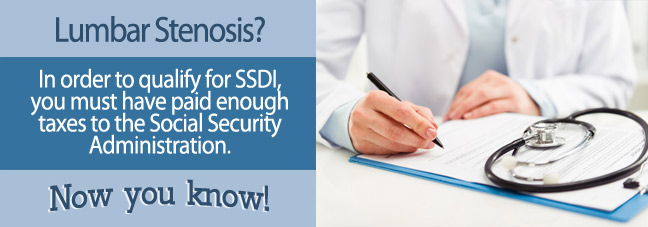Spinal stenosis is a condition involving the narrowing of spaces in the spine. Common symptoms of this condition include pain and weakness in various parts of the body. Spinal stenosis typically comes in one of two forms: cervical stenosis and lumbar stenosis.
If you have spinal stenosis, you may struggle to perform work-related tasks. If this condition prevents you from working and earning an income, you may qualify for disability benefits through the U.S. Social Security Administration (SSA). This guide will answer your basic questions about the application process with Spinal Stenosis.
Step 1: Determine How Spinal Stenosis Limits You
For you to qualify for disability benefits due to spinal stenosis, you should be able to demonstrate that your condition negatively impacts your ability to work and is likely to continue to prevent you from working for at least 12 months.
You can’t merely show the SSA that spinal stenosis renders you unable to fulfill your duties at your current job. The SSA may want to see evidence indicating your condition also prevents you from fulfilling your duties at any past jobs you have had. Additionally, you may need to demonstrate that spinal stenosis interferes with your ability to perform certain basic day-to-day tasks.

Step 2: Consult the Blue Book For Spinal Stenosis
The SSA’s Blue Book is a resource offering information about the various conditions that might qualify an applicant for disability benefits. Per the Blue Book’s listing for lumbar stenosis, to show that you’re eligible for benefits, you may need to provide evidence indicating you:
- Experience a certain degree of pain and/or sensory loss that meets the Blue Book’s criteria
- Display certain limitations that may result from spinal stenosis that a physical examination or diagnostic test may prove
- Show signs of lumbar stenosis through imaging tests or operative reports
- Can provide medical documentation showing you struggle with physical impairment resulting from spinal stenosis that is likely to last at least 12 months
Those are merely general guidelines. Consult the Blue Book listing for more specific information about the physical limitations that might qualify a spinal stenosis patient for disability benefits.
Step 3: Gather Required Documents
Medical records are not the only documents you will likely need to provide when applying for disability benefits. You should also gather the following:
- Birth certificate (or another valid proof of birth document)
- Documentation that you’re a U.S. citizen or legal alien
- If you served in the military prior to 1968, military discharge papers
- W-2 forms or relevant self-employment tax documents from the previous year
- An Adult Disability Report (which offers information about your condition and its impact on you)
- Pay stubs, settlement documentation, workers’ comp documentation, and other documentation of any benefits you may have already received
Step 4: Speak With a Disability Attorney
Gathering all the documents necessary to show the SSA you deserve benefits isn’t a task you need to complete yourself. An attorney may be able to assist you, allowing you to focus on getting the rest you need as you cope with a painful condition like spinal stenosis. To speak with an independent, participating attorney who subscribes to the website, complete the Free Case Evaluation today!